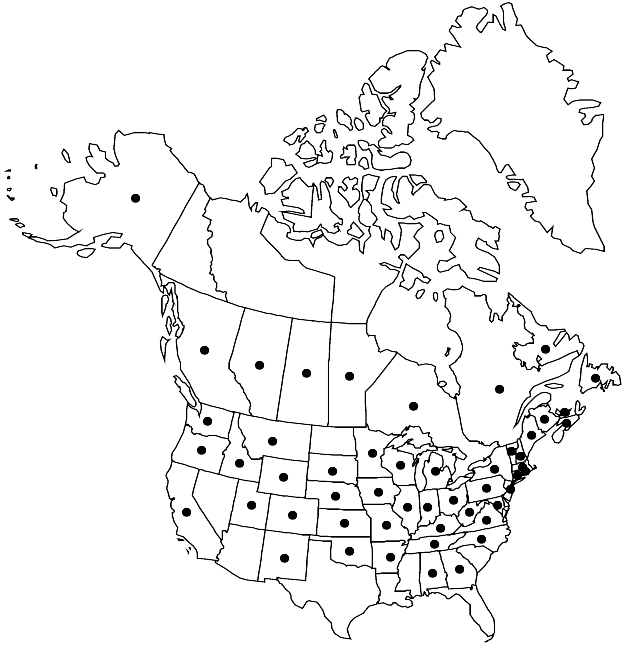Barbarea vulgaris
in W. Aiton and W. T. Aiton, Hortus Kew. 4: 109. 1812.
Biennials or, rarely, perennials; glabrous throughout or margins ciliate. Stems (1.5–)2–9(–12) dm. Basal leaves: petiole (0.5–)2–10(–17) cm; blade lyrate-pinnatifid, (1–)2–8(–10) cm, lobes 1–3(–5) on each side (rarely early ones undivided), lateral lobes oblong or ovate, 0.3–2(–4) cm × 1–8(–15) mm, sometimes slightly fleshy, margins entire, repand, crenate, or dentate, terminal lobe (ovate or suborbicular), (0.7–)1.5–4.5(–7) cm × (4–)10–30(–50) mm, (surfaces glabrous or margins ciliate). Cauline leaves: blade ovate or suborbicular (undivided), margins usually coarsely dentate, rarely subentire; conspicuously auriculate, auricles ovate or narrowly oblong (to 10 × 5 mm), glabrous. Fruiting pedicels divaricate to ascending or erect, 3–7 mm, terete or subquadrangular, thickened (narrower than fruit). Flowers: sepals 3–4.5(–5) × 1–1.5 mm, lateral pair slightly saccate basally, margins scarious; petals yellow, spatulate or oblanceolate, (5–)6–9(–10) × 1.5–2.5(–3.5) mm, base attenuate, apex rounded; filaments 3–4.5 mm; anthers 0.7–1.2 mm; ovules 18–24(–28) per ovary; gynophore to 0.5 mm. Fruits erect to erect-ascending, rarely appressed to rachis, torulose, terete, somewhat compressed, or 4-angled, (0.7–)1.5–3 cm × 1.2–2 mm; style slender, (1–)1.5–3(–3.5) mm. Seeds dark brown, plump, broadly ovoid to oblong or subglobose, 1.2–1.5 × 1–1.2 mm. 2n = 16.
Phenology: Flowering Apr–Jul.
Habitat: Waste places, ditches, riverbanks, damp grasslands, roadsides, fields, disturbed sites
Elevation: 0-3000 m
Distribution

Introduced; Alta., B.C., Man., N.B., Nfld. and Labr., N.S., Ont., P.E.I., Que., Sask., Ala., Alaska, Ark., Calif., Colo., Conn., Ga., Idaho, Ill., Ind., Iowa, Kans., Ky., Maine, Md., Mass., Mich., Minn., Mo., Mont., Nebr., N.H., N.J., N.Mex., N.Y., N.C., Ohio, Okla., Oreg., Pa., R.I., S.Dak., Tenn., Utah, Vt., Va., Wash., W.Va., Wis., Wyo., Europe, Asia, n Africa.
Discussion
Barbarea vulgaris, which is sometimes grown as a potherb, is highly variable in length and orientation of fruit and fruiting pedicel, style length, and the division of cauline leaves. Several varieties have been recognized, and they represent some of the many points along one continuum. In my opinion, it is better not to recognize any infraspecific taxa in North America.
Selected References
None.